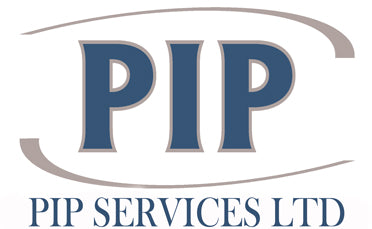UK Construction PPE Law: The PPER 1992 and Employer Duties
The foundation of construction site safety in the United Kingdom is governed by stringent legislation. To ensure your site and workforce are compliant, it is vital to understand the Personal Protective Equipment at Work Regulations 1992 (PPER 1992), and the amendments introduced in the 2022 Regulations.
Compliance: What PPE Employers Must Provide
The law places a direct and critical obligation on every employer:
- Free Provision: All necessary PPE must be provided to every worker, including employees and 'limb (b) workers' (casual, agency, or dependent contractors), at zero cost to them.
- Risk-Based Selection: The type of PPE used must be the result of a thorough, documented risk assessment. This follows the Hierarchy of Control, confirming that PPE is the last line of defence after all other practical control measures have been implemented.
- Information and Training: Workers must receive detailed instruction on when and how to wear, store, and maintain their equipment to ensure its effectiveness.
Minimum PPE Requirements in UK Construction
While a risk assessment dictates the exact gear, virtually every operational construction site across the UK requires a minimum level of personal protection. This is widely known as the 'Big Three'.
The Big Three: Head, Foot, and Body Protection
- Safety Helmets (Hard Hats): Mandatory in nearly all active areas to protect against falling objects, debris, and impact injuries. Head protection must be correctly sized and in good condition. Note: Turban-wearing Sikhs are exempt from the legal requirement to wear a safety helmet under the Employment Act 1989.
- Safety Footwear: Required to protect the feet from crushing injuries (via reinforced toe caps, typically steel or composite) and punctures (via protective mid-soles). Footwear must be suitable for the site's conditions, often featuring slip and penetration resistance.
- High-Visibility Clothing (Hi-Vis): Essential for maximising worker visibility to drivers, machine operators, and colleagues, especially in poor light or crowded areas. A fluorescent vest or jacket with reflective strips is the common minimum standard.
Specialist PPE for Specific Construction Hazards
The minimum 'Big Three' will be insufficient for many tasks. A detailed risk assessment is crucial for identifying when the following specialist protection is needed:
Respiratory Protective Equipment (RPE)
Activities that generate dust (such as cutting concrete, wood, or stone), fumes, or vapours require RPE. This may include disposable masks, half-masks, or powered respirators. Crucially, any tight-fitting RPE requires a mandatory face-fit test to confirm an effective seal against the face.
Eye, Ear, and Hand PPE
- Eye Protection: Safety glasses or goggles must be worn during high-risk tasks like grinding, drilling, or handling chemicals. Full-face shields may be necessary for welding or certain demolition work.
- Hearing Protection: Earplugs or ear defenders must be used when noise levels exceed legal exposure limits to prevent permanent hearing damage from loud machinery and power tools.
- Safety Gloves: Hand protection must be matched to the hazard: anti-vibration gloves for using percussive tools, cut-resistant gloves for sharp objects, or chemical-resistant gloves for cement and hazardous substances.
Fall Arrest Systems
For any work at height where collective measures (like guardrails or scaffolding) cannot eliminate the fall risk, personal fall arrest systems are required. This typically involves a full-body harness, lanyard, and anchor points. These systems demand thorough training, pre-use checks, and regular statutory inspection.
You can learn more about working at height in our blog post Working at Height: Best Practices for UK Builders.
Worker Responsibilities and HSE Enforcement
While employers must provide the equipment, workers share the responsibility for safety by complying with site rules and using the PPE provided correctly.
- Consistent Use: Workers must wear PPE at all times when exposed to the identified risk, even for short tasks.
- Reporting: Prompt reporting of any damaged or lost equipment is a legal duty for the worker.
The Health and Safety Executive (HSE) enforces these regulations in the UK. Non-compliance by employers can lead to improvement notices, prohibition notices, and substantial fines. For all construction businesses, integrating a culture of safety where PPE is correctly selected, maintained, and worn is a legal and moral imperative.
Conclusion: Prioritising PPE for Construction Safety and Compliance
Personal Protective Equipment is non-negotiable within the demanding environment of UK construction sites. It represents the final, essential safeguard for every worker when risks cannot be engineered out or fully controlled by other means.
The Personal Protective Equipment at Work Regulations 1992 (PPER 1992) set a clear legal obligation for employers to assess risks, provide the right equipment free of charge, and ensure adequate training is delivered. From the fundamental 'Big Three' minimum requirements; head protection, safety footwear, and high-visibility clothing, to highly specialised gear for respiratory and fall protection, the level of PPE must always be tailored to the hazard.
By adhering to these stringent standards and fostering a strong safety culture where workers actively use and report defects in their gear, the UK construction sector can meet its legal duties, minimise injuries, and ultimately, save lives. Safety is a shared responsibility, and compliance with PPE regulations is the bedrock of operational excellence and worker wellbeing on any site.
Why choose PIP Services for your health and safety consultancy?
We’re dedicated to providing the highest level of advice on all Health and Safety related matters and will assist companies in meeting their obligations. We offer a wide range of Health & Safety Services for a variety of clients. We represent many companies and deal with all of their Health & Safety matters.
We’re also an accredited CITB, NEBOSH, IOSH, IWFM & CITB training provider, as well as a ProQual-approved NVQ centre.
We are rated 4.9/5 on Trustpilot, and you can read our reviews here. If you would like to speak to us about your training needs, please get in touch using the button below.

